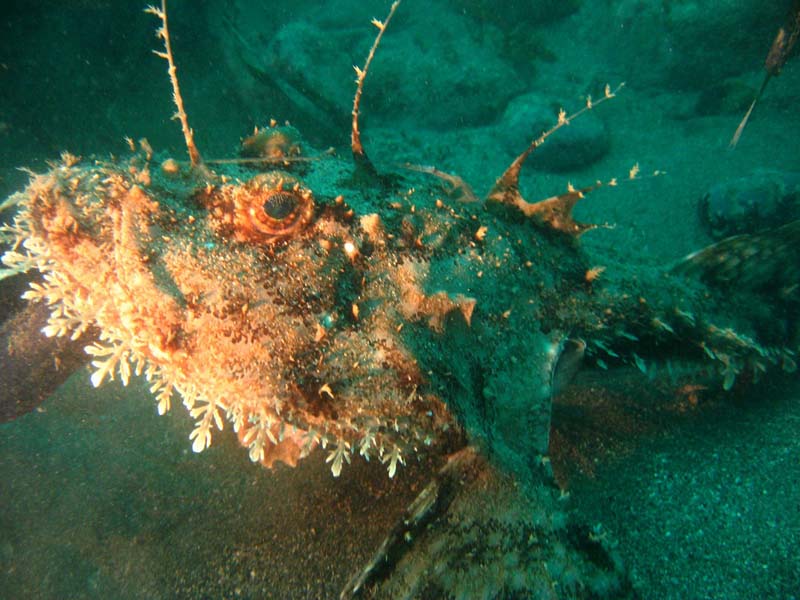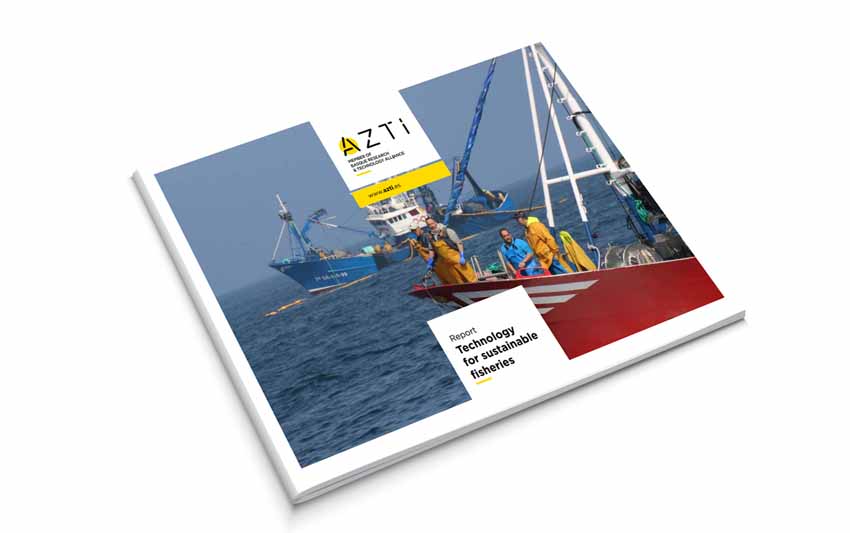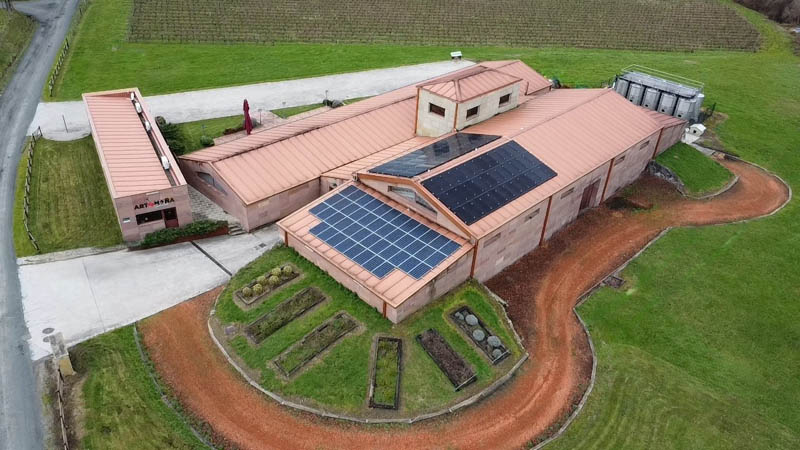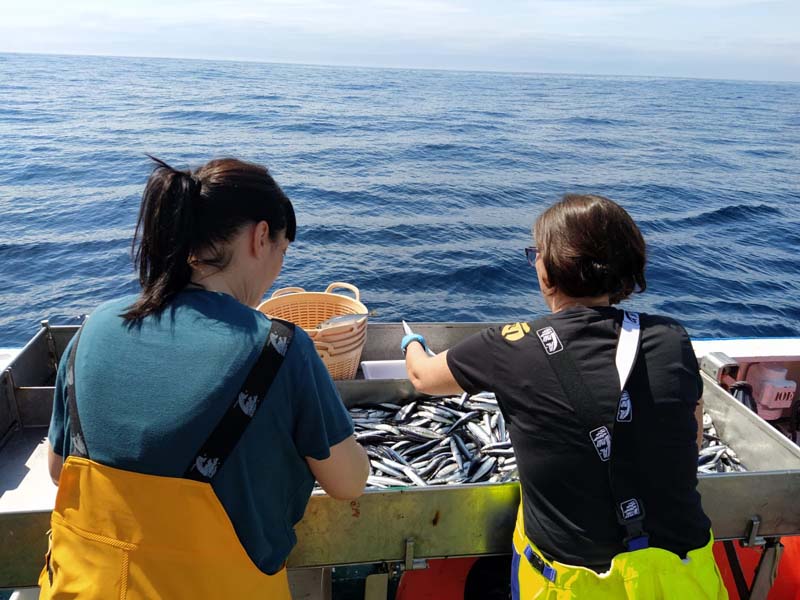Black and white anglerfish hybridise producing viable descendants
Últimas noticias
Digital Transformation of the Fishing Fleet: AZTI Explores the Future of the Industry with AI and Sustainable Solutions
The replica of the San Juan will set sail on a scientific mission thanks to an agreement between Albaola and AZTI.
Artomaña Txakoli Achieves the Best Enviroscore Category (A), as a Result of Its Environmental Commitment
- A study by the AZTI technology centre shows for the first time that the two species of anglerfish hybridise and can reproduce viably.
- The research also questions the reliability of the species assignment approach used until now.
- The results, obtained in the framework of the Joint Research Centre funded GECKA project, have been published in the scientific journal “Evolutionary Applications”.
Sukarrieta, 28 July 2021 – Nature never loses its ability to surprise us and question previously established principles. Black and white anglerfish have always been considered separate species. Morphologically, they are mainly distinguished on the basis of the colour of the peritoneum, the epithelium lining the intestinal cavity (black for black anglerfish and white for white anglerfish). However, a new analysis led by the AZTI technology centre, member of the BRTA, questions the effectiveness of this identification method and has also discovered the existence of thus far unknown hybrids, resulting from the mating between white and black anglerfish.
“We have shown for the first time that black and white anglerfish hybridize, and that these hybrids can reproduce and have viable offspring; furthermore, the percentage of hybrids in some areas is very high, up to 20 percent”, explains the expert in marine genomics at AZTI, Naiara Rodríguez-Ezpeleta.
To carry out the study, developed within the framework of the GECKA project and published in the scientific journal “Evolutionary Applications”, AZTI researchers analysed hundreds of anglerfish samples that were assigned to white or black anglerfish based on the colour of the peritoneum. The samples were collected across the species distribution area in the Atlantic by collaborating institutes.
“When analysing in the laboratory samples identified as white anglerfish, we realized that some of the specimens were genetically black anglerfish, so we came to the conclusion that the colour of the peritoneum is not a reliable characteristic to assign species”, explains the researcher. The study has also shown that there is hybridization between black and white anglerfish.
Índice de contenidos
Hybridization between black and white anglerfish
The study has also shown that there is hybridization between black and white anglerfish.
“We also saw that there are hybrids that arise from the mating between black and white anglerfish, but also between hybrids and white or black anglerfish, so we can ensure that hybrid anglerfish are viable and can reproduce, which could have consequences on the conservation of the species in the medium and long term, as it could lead to the disappearance of the black and white anglerfish if the hybrids outperform them ”, adds Rodríguez-Ezpeleta.
Thus, it is crucial “to find out if hybridization has occurred recently and, although research has not yet been able to determine the reasons for it, it is possible that climate change has increased the coexistence of both species in the same area and, therefore, induced the existence of hybrids”.

Impact on fisheries management
White anglerfish inhabits the Mediterranean Sea and the Northeast Atlantic, where it is managed by the International Council for the Exploration of the Seas (ICES) as three management units: North Shelf, North and South. Previous studies carried out to assess the population of this species in the Atlantic found no genetic differences between the management units, but this had to be confirmed through the analysis of a large number of genetic markers, such as in the study now developed by AZTI.
“By discarding hybrids and misassigned individuals, we focused on the white anglerfish and analysed whether or not there were genetic differences between the management units. We found that the white anglerfish constitutes a single genetic population throughout the Atlantic, a crucial knowledge to inform fisheries management of this species and calculating Total Allowable Catch (TAC) recommendations”, says the AZTI expert.
Therefore, the results obtained by AZTI are also relevant for the assessment of the biomass of white anglerfish and the management of the species, since the discovery opens up the possibility of managing the white anglerfish in the Atlantic as a single unit from now on, prioritising biological characteristics over political and administrative considerations for management unit definition, and thus providing greater accuracy when establishing the natural population of the species.
Consequences for the fisheries sector and consumers
In addition, the study adds important information for the economy of the fishing sector and consumers, and it may have consequences on the price of black and white anglerfish, which is now different for each species.
“According to the data recorded by our fisheries assessment team, looking at the last two years, the price of white anglerfish in the first sale is usually about 4 or 5 euros per kilo and that of black anglerfish, about 6 or 7. If you cannot visually distinguish both species, these prices shouldn’t be different either” adds the AZTI researcher.
The next objectives of the research, this time with the financial support of the General Secretariat of Fisheries of Spain, will be to study the impact of hybrid anglerfish on the evaluation and management of the species, including the economic impact of the potential decrease of the spawning biomass due to hybrids, and the species mixing. The GECKA project, led by AZTI, has received funding from the European Commission’s Joint Research Centre, the Basque Government’s Department of the Environment, Territorial Planning, Agriculture and Fisheries and the Basque Government’s Department of Education. The project has also counted with the collaboration of researchers from the Marine Institute (Ireland), Marine Scotland, CEFAS and the University of Salford (UK) and IEO (Spain).
Aguirre-Sarabia, I., Díaz-Arce, N., Pereda-Agirre, I., Mendibil, I., Urtizberea, A., Gerritsen, H. D., Burns, F., Holmes, I., Landa, J., Coscia, I., Quinconces, I., Santurtún, M., Zanzi, A., Martinsohn, J. T., & Rodríguez-Ezpeleta, N. (2021). Evidence of stock connectivity, hybridization and misidentification in white anglerfish support the need of a genetics-informed fisheries management framework. Evolutionary Applications: doi: https://doi.org/10.1111/eva.13278







